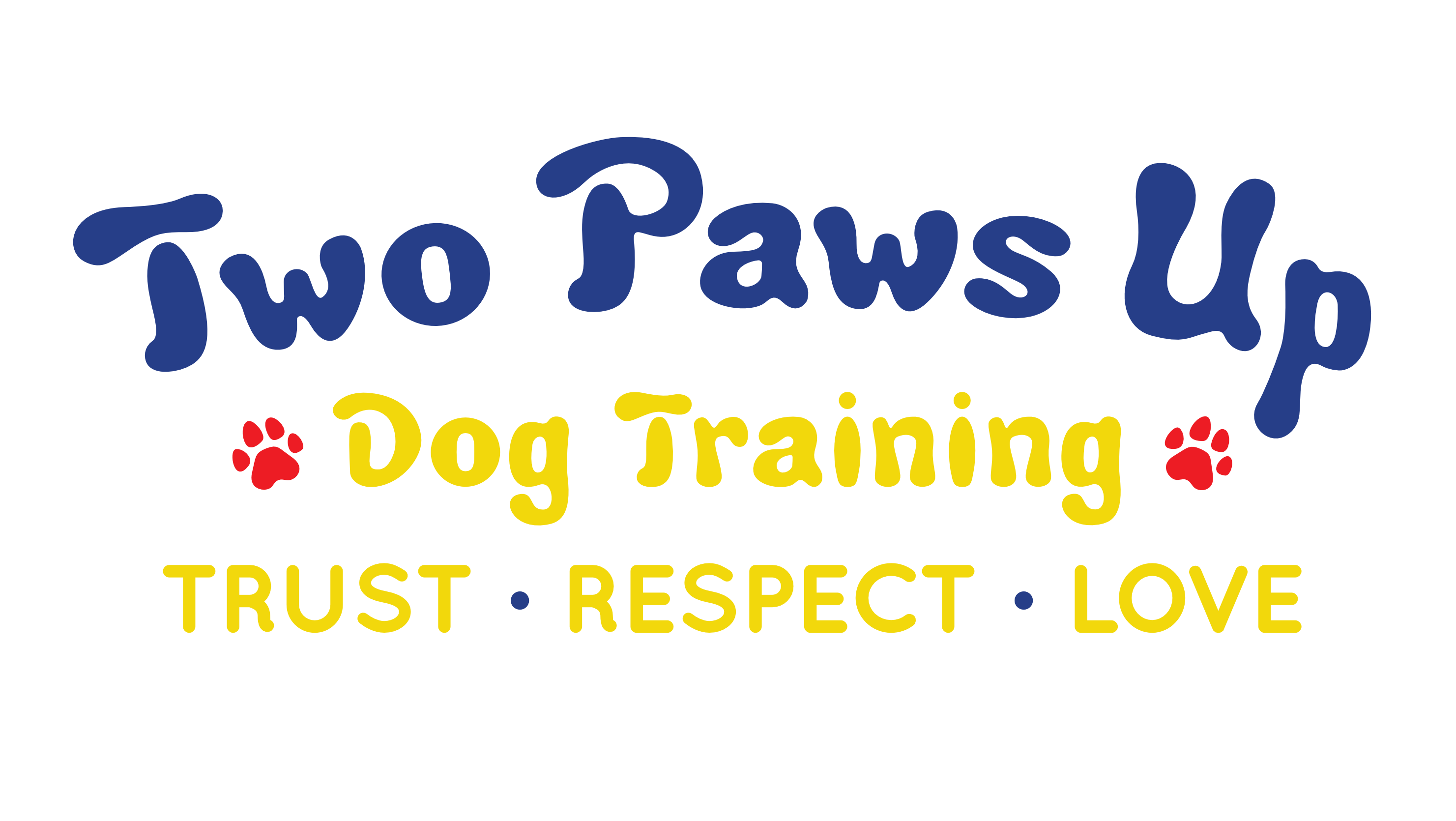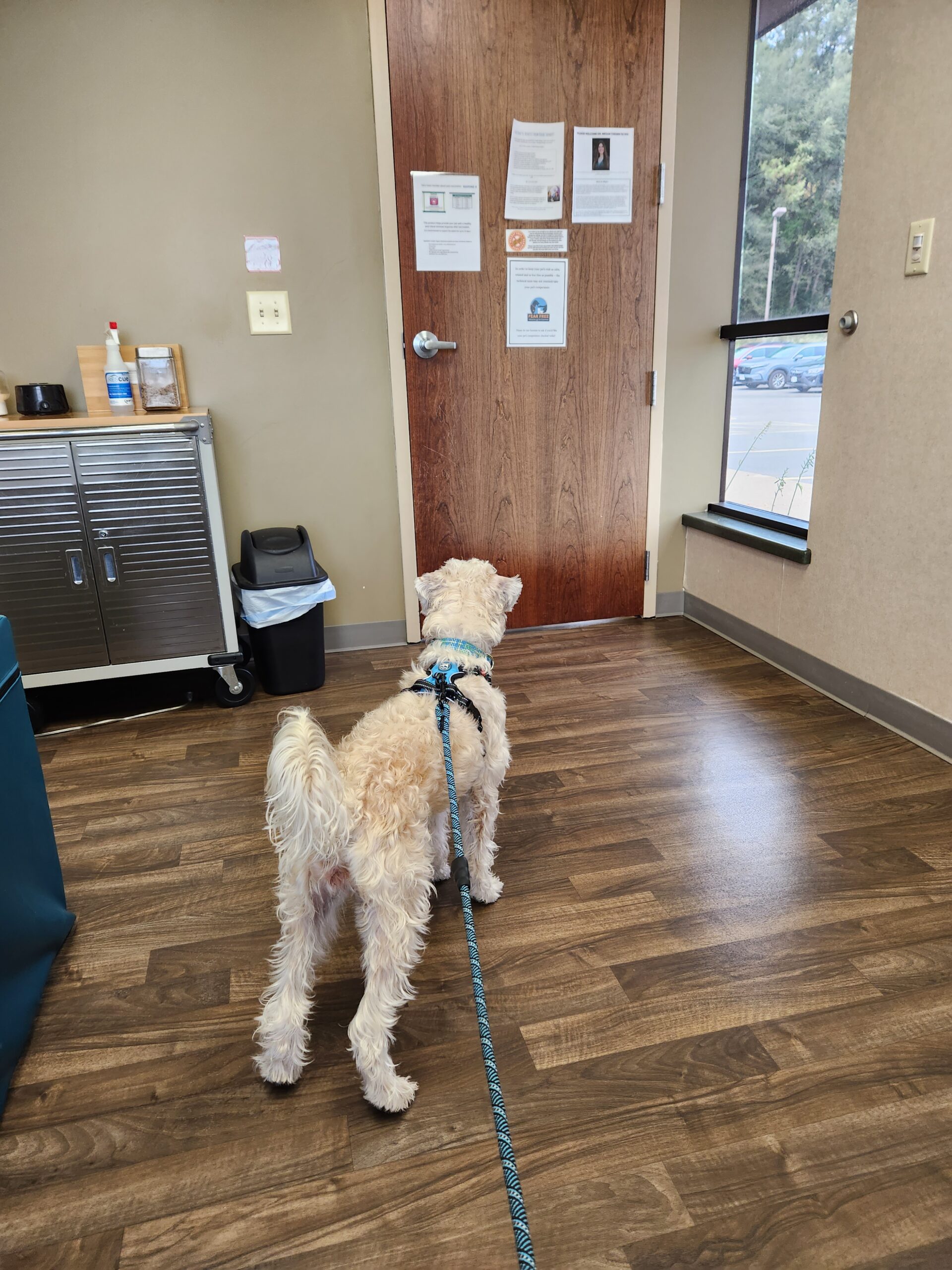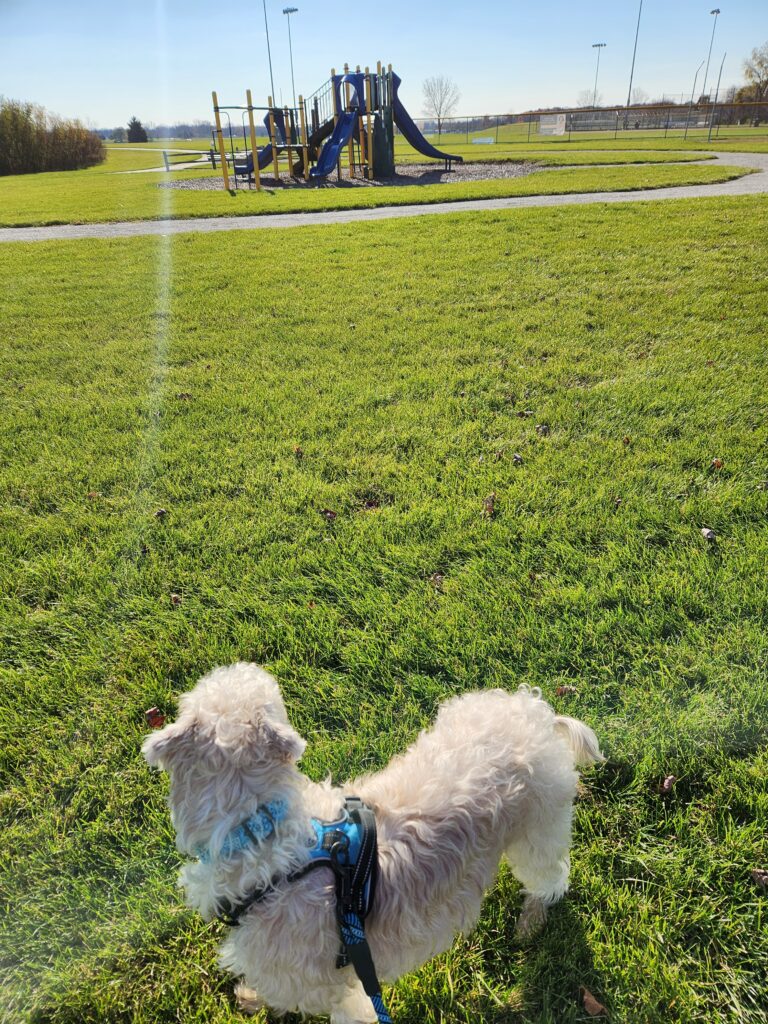Let’s talk about thresholds and consent…
When we use the term “thresholds” in relation to our dogs there are many different concepts we could be discussing.
- We may be talking about sitting and waiting at a doorway.
- We may be talking about entering a new location or environment.
- We may be talking about the level of stimulus that causes your dog to bark & lunge at something.
- We may be talking about what level of excitement your dog can handle.
For the sake of this conversation, we are going to look at emotional thresholds or what the dog can handle emotionally before having a reaction. The reaction may be what we typically think of as reactivity – barking & lunging or it may be a fear response such as cowering and moving away. It may be excitement, resulting in the dog jumping up and barking in a high-pitched manner.
What I am particularly interested in is what happens if we put the dog in a situation they are not fully equipped to handle. What do they do and how do they tell us that?
It is very important to understand that our dog’s threshold level for any given stimulus may change day to day (or minute to minute) even in the same context. It is our job as our dog’s advocate to help him/her gradually raise their threshold so they can handle more emotional stress, both good and bad and learn a proper way to deal with it.
This conversation was sparked by today’s Happy Visit with my dog Livvy. A little back story for those of you not following her story. During adolescence, she had a few unfortunate events that really set her back around people, causing her to be very afraid of new people. She also dislikes the vet, which may or may not be totally related. Many dogs are worried at the vet and love new people.
We have been working really hard on helping to reduce her reaction to unfamiliar people out in the world as well as making her feel more comfortable inside the vet’s office. She has been doing really good on both fronts. She is mostly able to disengage from people out and about when they far enough away that she feels safe. Her feeling of safety is yet another threshold. Once we put her in a situation where she doesn’t feel safe (such as a person who is too close), she will react by barking and maybe lunging in their direction telling them to go away.
That is what we think of when we talk about reactivity. That is where fight and flight come in. If she is far enough away from the stimulus, she may be able to move away without reacting. If she is too close and/or feels like she cannot escape, she will put up a fight. This is why the leash can be so problematic with many dogs. It takes away their flight option. We also see this same response if the dog is “cornered” or in a tight space.
Much of our reactivity training starts with teaching the dog alternate behaviors such as looking away from the trigger, looking towards the ground, sitting, etc. Those do a fantastic job of beginning the process and for things that your dog never has to interact with may be all we need. However, in the situation like the vet, Livvy cannot be examined from ten feet away. So, we have to actually work until she can be touched and examined, essentially changing her threshold for handling by a scary person.
How do we do that? That is the challenging part. We do a lot of counterconditioning and/or desensitization to help make the scary thing less scary. That again may only get us so far. Do you love going to the doctor? Most of us do not, but we know it is the lesser of two evils and tolerate it with hopefully minimal stress.
For many of our dogs this is all we can hope for. I know for sure that Livvy will NEVER love the vet. She will never be my other Wheaten, who will literally run into the vet’s office and go anywhere with them and say, “please touch, poke and prod me, PLEASE!!!!”. This is just not in her DNA.
So, what do we do? What we are working on with her is teaching her how to give consent. She is learning that giving us warning signals works! Over the past 14 months of almost weekly Happy Visits, she has learned to trust Zoe, but still does not love the handling, but she is now able to tell us in much more subtle ways.
When I am holding her and Zoe is doing the handling, we may get a lip lift occasionally as her way to say I have had enough at this moment. When that happens, we allow her a moment to walk away and regroup and the next time she can typically handle it and/or we adjust the process making the next hold shorter, or the touch in a different location on her body that she tolerates better.
It has been a long process, but she is learning that she does have the option of flight even when being restrained or in a tight space. She is learning how to give proper warning signals and how to move away when she feels like she is reaching that threshold. In today’s visit, she would then come back over for me to hold her (and feed her meatballs 😊) when she was ready. This is consent! She is learning that she dictates the process and this is a very important concept for our dogs.
Over the past two weeks, we started introducing the actual doctor at our Happy Visits. Up until a few weeks ago, we had been working with just one vet tech – Zoe. Adding the doctor definitely changed things for her. What she can do for Zoe, she cannot do yet for the vet. Her thresholds are different for the two different people in the same context.
The important part is she is learning to give consent!
She is learning to move away when she feels worried versus reacting like she used to. She is able to approach the vet and eat some treats from her hand. You can tell she is still worried by her body language, but she is able to eat the treats and then look back to me when she is ready to leave and I can call her out of that situation. This is HUGE for her. Up until a few weeks ago we had to toss treats away and even then, she may have reacted vs turning her back to get them. Unfortunately, in the vet’s office there is not always enough room for a proper “Treat/Retreat” session.
NOTE: I would NOT use this technique in other contexts. We can have a LENGHTLY discussion on why you do not want to use treats to lure a fearful dog up to a person. Unfortunately, with the vet, we do have a tighter deadline. She needs an exam in March…We have been working on this since August…..last year.
That is a huge milestone!! This is effectively her giving consent. She is able to approach while she is comfortable (although still not confident) and freely leave when she feels that she needs to.
So often, we push our dogs way past their threshold and ignore their subtle signs until they are overt and result in a growl, snap or bite. By learning to read their body language and teach them that they do have the ability to give consent we can go far and avoid potentially dire consequences.
Here is another way you can work on teaching consent to your dog – https://www.rufftranslation.com/blog/the-bucket-game. I have not tried this, but it was one thing my vet recommended we try a few weeks ago.


